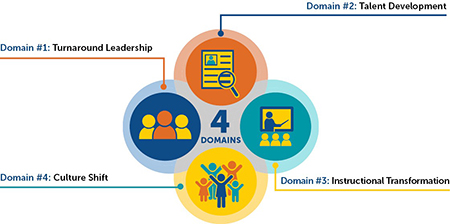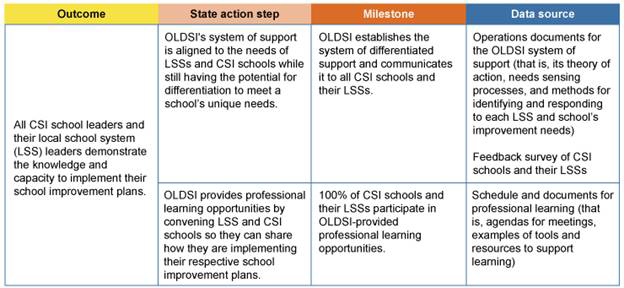Viewpoints and Findings from the REL Mid-Atlantic
Using Data to Keep School Improvement On-Track: Focus on Comprehensive Support and Improvement
By
Natalie Lacireno-Paquet

Research on chronically low-performing schools suggests that monitoring the implementation and progress of those schools’ improvement efforts can help them use limited resources more effectively. REL Mid-Atlantic is partnering with the Office of Leadership Development and School Improvement (OLDSI) at the Maryland State Department of Education to co-develop a tool to track OLDSI’s services to and engagement with schools that need Comprehensive Support and Improvement (CSI) and their districts. This initiative supports the state in taking the actions outlined in its plan to comply with the Every Student Succeeds Act (ESSA) and then correlating state supports with outcomes in the schools.
Under ESSA, states must articulate their approach to supporting CSI schools. These schools are generally the lowest-performing and face the most significant challenges in academic achievement, student growth, and other areas. In Maryland, CSI schools receive support from various offices, including OLDSI. OLDSI provides comprehensive services, including a series of leadership development workshops, ongoing school-based leadership coaching, and tools and resources housed on the state’s Resource Hub and designed to help schools improve.
OLDSI and REL Mid-Atlantic are partnering to identify:
- Research on leading indicators that can be used to monitor the progress of school improvement
- Indicators and measures to track the state’s implementation of support to schools for improving student outcomes
The point of developing a progress monitoring tool is not to collect new data, but to organize and use the data that are already available to track progress. The tool is based on the Four Domains of Rapid School Improvement, developed by the Center on School Turnaround: (1) turnaround leadership, (2) talent development, (3) instructional transformation, and (4) culture shift. The tool includes a series of expected outcomes for each domain, along with one or more action steps that the state can take to help achieve each outcome. The tool also identifies milestones for each of the action steps, and suggests data to track evidence of progress.
The following is an example of one outcome and its related action steps, milestones, and data source, at the state level for Domain 1: Turnaround Leadership.

The final phase of the project involves continued collaboration between the REL and OLDSI on a guidance document to support OLDSI’s use of the tool. The document will have three parts: an overview of the progress monitoring tool and its features, suggestions for implementation, and a sample template from the tool, with more details and resources given in the document’s appendices.
The state will use the tool to create a comprehensive picture of the strategies in play to support school improvement and identify any need for mid-course corrections. For instance, reviewing the tool could highlight a gap in OLDSI support or reveal emerging needs that can be addressed. Keeping track of school and district participation in support activities could also inform outreach or revisions to OLDSI programming. In addition to identifying supports provided to schools, the state will map each activity or program to goals informed by the Four Domains for Rapid School Improvement framework. This process will enhance the transparency and focus of the support provided to CSI schools, and could also suggest ways to generalize the concept for use by other states.
